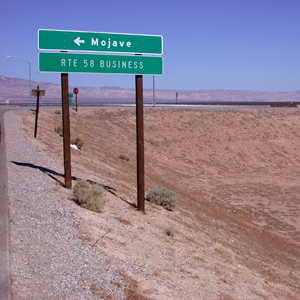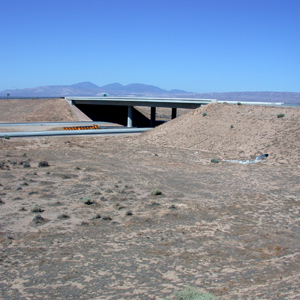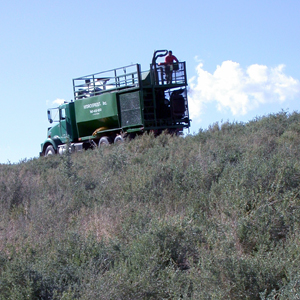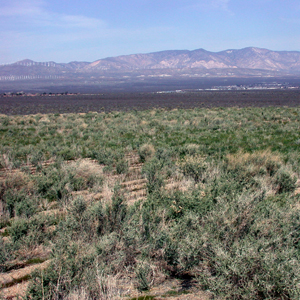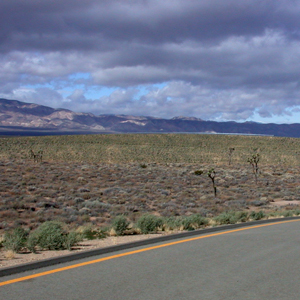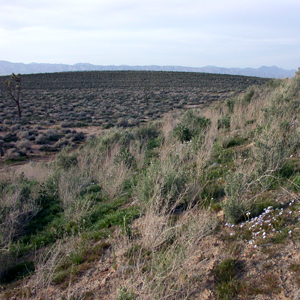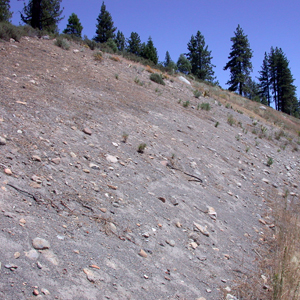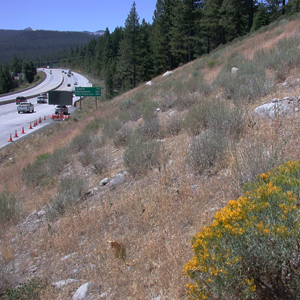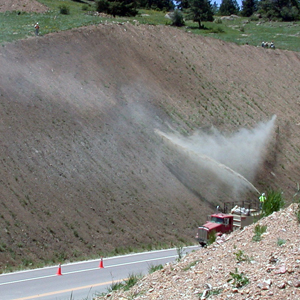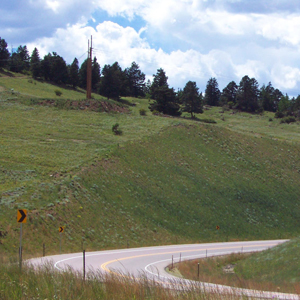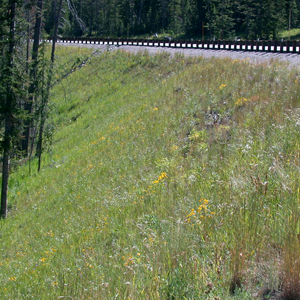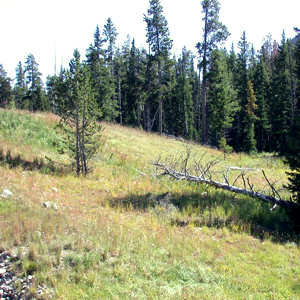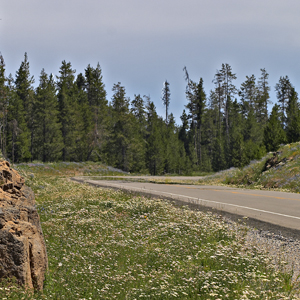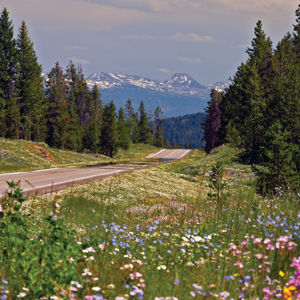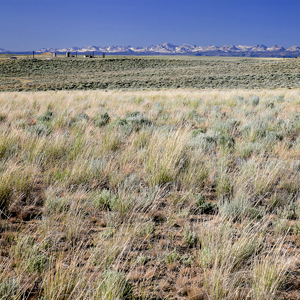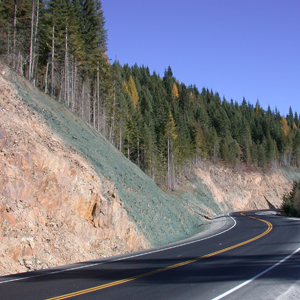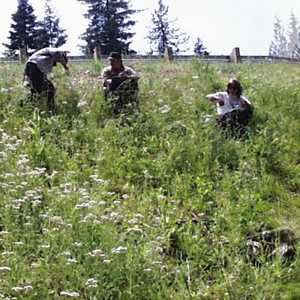A Different Way to Look at the Soil
We instinctively know that the growth of most plants is impossible without healthy, fertile soil. The key difference between project success and failure lies in the understanding of the importance of a healthy functioning soil community – the millions of microbes that live in each ounce of fertile soil. Without the micro-plants and microorganisms thriving, the soil would become inactive and soon lose its capacity to support plants. Microbes help to bring plant nutrients into available form and make the soil crumbs stable and resistant to erosion. Creating a hospitable environment for microbes in the soil is a critical task for the reclamation practitioner intent on re-establishing sustainable native plant growth on drastically disturbed soils, a task made even more challenging when those disturbed soils reside in harsh environments.
Conventional Seeding Misses the Mark
Conventional seeding practices invariably focus on the solid particles of the soil (both mineral and organic) but pay little attention to re-establishing the teeming populations of minute plants and animals that live within the soil. Most conventional seeding projects lack even the most basic interpretation of a soil analysis to evaluate how the living soil community is functioning. Instead, conventional seeding practices are predominantly concerned with immediate and short-term erosion control, as opposed to securing long-term erosion control through the re-establishment of sustainable plant growth via a healthy and vibrant functioning soil community.
While conventional seeding practices have improved significantly over the past decade, they remain disappointingly resistant to attaining the objective of re-establishing sustainable growth of diverse native grasses, forbs and shrub plant species. The assessment by a State transportation agency roadside revegetation practitioner that “85% of everything we seed is a failure, and I’m being charitable about the outcome of the remaining 15%” is as relevant today as it was a decade ago.
The fundamental recurring issues with the reclamation seeding industry are two-fold: (1) when faced with drastically disturbed soils, a failure to acknowledge and address the critical requirement to resuscitate a functioning soil community; and (2) endemic project implementation shortcomings.
Why the Living Soil Membrane Works
Unlike other ‘band-aid’, topical conventional seeding practices, the Quattro Living Soil Membrane (LSM) technology focuses on jumpstarting the natural processes of soil formation required to re-establish a functioning soil community where micro-organisms, plants, and animals can be reintroduced into drastically disturbed environments.
The living soil membrane works in tandem with nature to set the stage for the natural re-establishment of a site-specific functioning soil community. Unlike conventional seeding that temporarily grows plants with limited long-term success, the living soil membrane nurtures early seral stage native plant species in tandem with mineral balancing and biological amendments as it re-establishes the functioning soil community for long-term viability and success.
Working with nature, the Quattro Living Soil Membrane consistently delivers outstanding, long-term results for native revegetation projects. The results speak for themselves.
Conventional Revegetation Project – Mojave, CA
The results of a conventional seeding practices project implemented on the I-58 Mojave Overpass 2 miles northeast of Mojave township. Three years after seeding, no sustainable plant growth occurred.
Project Conditions
Harsh climate, minimal rainfall, sandy sterile soil with minimal organic matter and high salt content.
Project Miss
No attempt to retain live topsoil or to resuscitate a functioning soil community.


